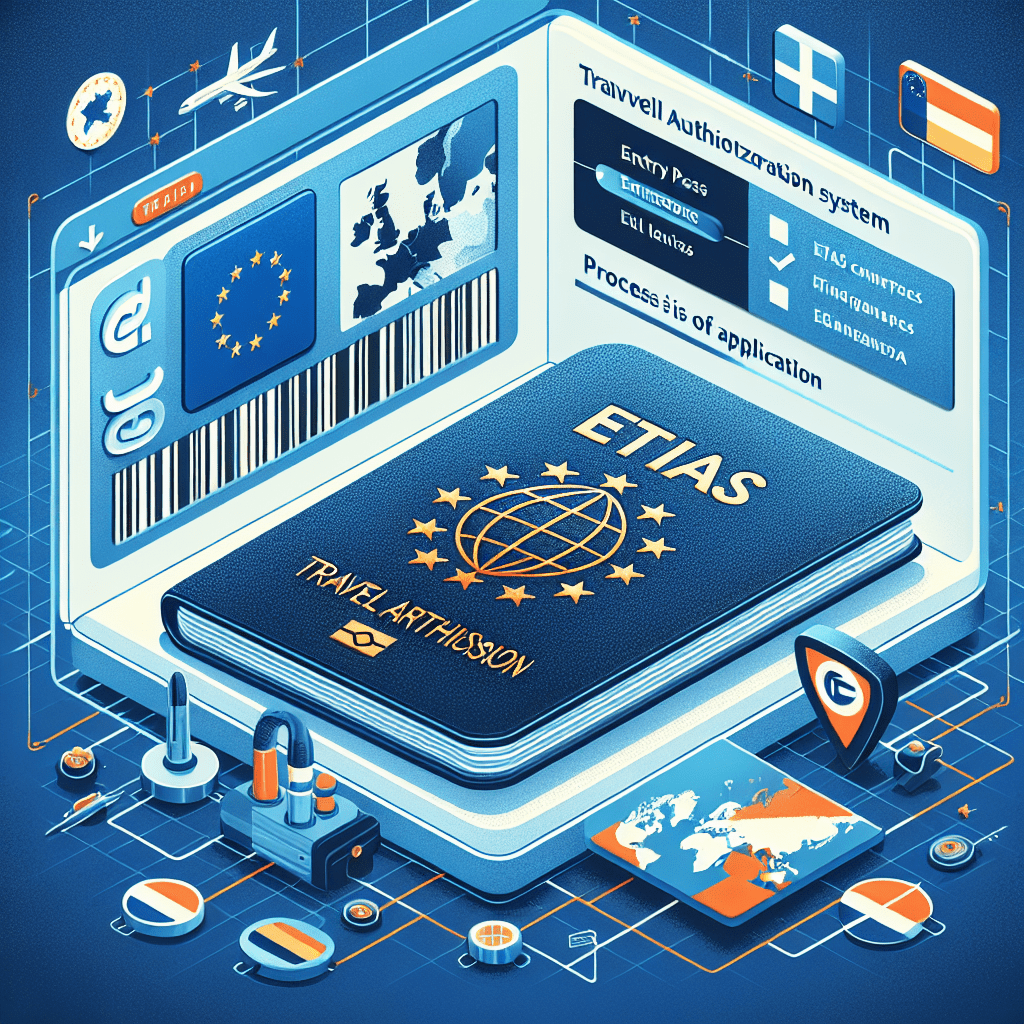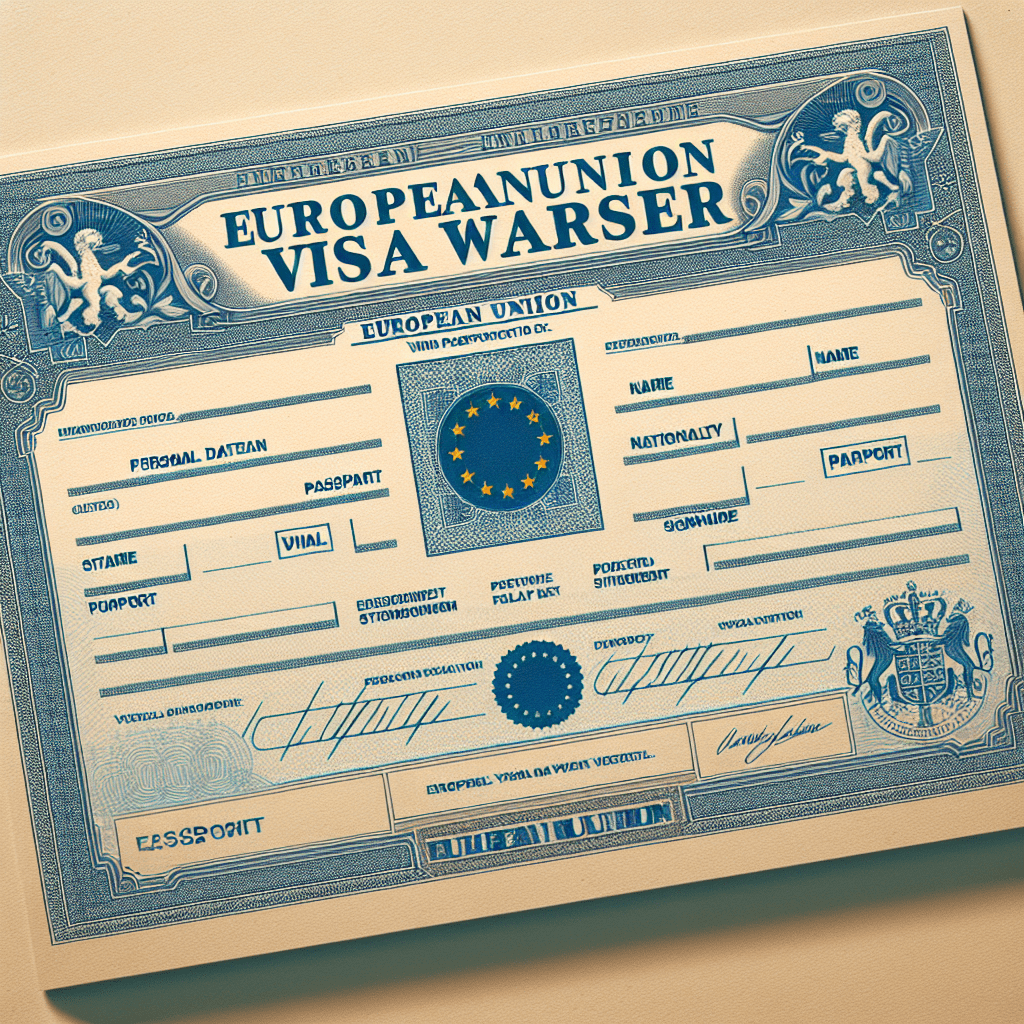The Impact of ETIAS on Tourism: What Travelers Should Expect

The European Travel Information and Authorization System (ETIAS) is set to transform the landscape of travel to Europe. As a new requirement for visa-free travelers visiting the Schengen area, ETIAS aims to enhance security and streamline entry processes. This system is crucial for tourists planning to explore the diverse cultures and landscapes of Europe, as it introduces a new layer of preparation for their journeys. Understanding ETIAS is essential for anyone looking to travel to Europe, as it directly impacts how travelers will navigate the entry requirements of Schengen area countries.
ETIAS is not just a bureaucratic hurdle; it represents a significant shift in European travel regulations. By requiring travelers to obtain an electronic travel authorization before their trip, ETIAS ensures that security checks are conducted well in advance, thereby reducing potential delays at the border. This essay delves into the implications of ETIAS on tourism, providing insights into what travelers should expect when planning their European adventures. For more detailed information on ETIAS, you can visit this page.

Understanding ETIAS
Background and Implementation Timeline
The European Travel Information and Authorization System (ETIAS) was conceived as a proactive measure to bolster security within the Schengen area. The primary motivation behind its creation is to pre-screen travelers from visa-exempt countries before they arrive in Europe. This preemptive approach aims to identify potential security risks, thereby enhancing the safety of both residents and visitors. The system is part of a broader EU travel policy designed to modernize and strengthen border management across the continent.
ETIAS is not a visa but rather a European visa waiver, similar to the United States’ ESTA program. It allows for visa-free travel to Europe while ensuring that travelers meet specific security criteria. The introduction of ETIAS is a response to the increasing need for more robust EU border control measures, given the rising number of travelers and the evolving security landscape.
The implementation timeline for ETIAS has been carefully planned to ensure a smooth transition. Initially proposed in 2016, the system is expected to become fully operational by 2025. Key dates include the launch of the application platform and the commencement of mandatory ETIAS checks for all eligible travelers. These milestones are crucial for travelers planning to visit Schengen area countries, as they will need to factor in the new requirements when organizing their trips.
Application Process
Obtaining an ETIAS authorization is a straightforward process designed to be user-friendly and efficient. Travelers can apply online through a dedicated portal, where they will need to fill out a form with personal information, travel details, and background questions. The application process is designed to be completed in about 10 minutes, making it a convenient step for those planning to travel to Europe.
Once the application is submitted, it undergoes automated processing against various security databases. Most applications are approved within minutes, but some may require additional manual review, which can take up to 96 hours. It is advisable for travelers to apply well in advance of their planned departure to account for any potential delays.
The cost of an ETIAS authorization is expected to be around €7, a nominal fee compared to traditional visa costs. The authorization is valid for three years or until the traveler’s passport expires, whichever comes first. This validity period allows for multiple entries into the Schengen zone, provided each stay does not exceed 90 days within a 180-day period.
Key Requirements
To successfully apply for ETIAS, travelers must have a valid passport from a visa-exempt country. The passport must be machine-readable and have a validity that extends at least three months beyond the intended departure from the Schengen area. Additionally, applicants will need to provide an email address to receive their ETIAS confirmation and a credit or debit card to pay the application fee.
The criteria for approval are primarily based on security, health, and migration risk assessments. Applicants with a criminal record, a history of overstaying in the Schengen area, or who pose a public health risk may face rejection. However, the system is designed to be inclusive, and most travelers will not encounter issues if they meet the basic requirements.
Understanding these key requirements and the application process is essential for anyone planning to visit Europe. By ensuring compliance with the new European travel regulations, travelers can enjoy a seamless experience when entering the Schengen area. As the implementation of ETIAS approaches, staying informed about these changes will be crucial for all prospective visitors.

Impact on Tourism
Increased Security Measures
ETIAS is a pivotal component of the European travel system, designed to enhance security across the Schengen area. By requiring travelers to obtain an EU travel authorization before their journey, ETIAS allows for thorough pre-screening against security databases. This proactive measure is intended to prevent individuals who may pose a threat from entering the Schengen zone, thereby safeguarding both residents and visitors.
The benefits of these heightened security measures are significant. Travelers can expect a more secure environment, with reduced risks of incidents that could disrupt their travel plans. Moreover, the streamlined process at border checkpoints, facilitated by pre-approved ETIAS authorizations, is likely to result in shorter wait times and a more efficient entry experience.
However, the implementation of ETIAS also presents potential challenges. Some travelers may find the additional step of obtaining an ETIAS authorization cumbersome, particularly if they are accustomed to the ease of visa-free travel in Europe. Additionally, there may be concerns about data privacy and the handling of personal information, although the EU has stringent regulations in place to protect such data.
Effect on Travel Itineraries
The introduction of ETIAS is set to influence how travelers plan their trips to Europe. With the requirement for advance travel authorization, individuals will need to incorporate this step into their itinerary planning. This change is particularly relevant for those engaging in Schengen area travel, as it necessitates a shift from spontaneous travel to more structured planning.
For travelers who enjoy the flexibility of last-minute trips, the need for an ETIAS authorization may require adjustments. While the application process is quick and approvals are generally swift, it is advisable to apply well in advance to avoid any potential delays. This requirement may encourage travelers to finalize their plans earlier, ensuring that all necessary documentation is in place before departure.
Despite these changes, the impact on travel itineraries is expected to be manageable. The convenience of an online application process and the relatively low cost of the authorization mean that travelers can easily integrate ETIAS into their travel preparations. As a result, the overall experience of traveling to Europe is likely to remain positive, with the added benefit of enhanced security.
Economic Influence
The economic implications of ETIAS on tourism in the Schengen area are multifaceted. On one hand, the system is expected to contribute to a safer and more secure environment, which could enhance the appeal of Europe as a travel destination. This increased security may attract more visitors, potentially boosting tourism revenue across the region.
However, there are also concerns about the potential impact on regions heavily dependent on tourism. The introduction of new European travel regulations may initially deter some travelers, particularly those unfamiliar with the process. To mitigate this, tourism boards and local governments may need to invest in awareness campaigns to educate potential visitors about the simplicity and benefits of the ETIAS system.
Overall, the economic influence of ETIAS is likely to be positive in the long term. By ensuring that travelers meet specific Europe entry requirements, the system can help maintain the integrity and reputation of the Schengen area as a premier travel destination. As regions adapt to these changes, they may find new opportunities to attract and accommodate visitors, ultimately benefiting from the enhanced security and streamlined travel processes that ETIAS provides.

Travelers’ Perspectives
Perceived Benefits and Concerns
Travelers’ reactions to the introduction of ETIAS are mixed, reflecting a balance between appreciation for enhanced security and concerns about potential inconveniences. Many travelers recognize the value of improved security measures within the Schengen area, acknowledging that the EU travel authorization process can help prevent security threats and ensure a safer travel experience. This reassurance is particularly appealing to those who prioritize safety when planning their trips to Europe.
However, some travelers express concerns about the additional step required for visa-free travel to Europe. The need to obtain an ETIAS authorization may be seen as an inconvenience, particularly for those accustomed to spontaneous travel. Additionally, there are common concerns regarding privacy and data protection, as the application process involves sharing personal information. The European Union has implemented strict data protection regulations to address these concerns, ensuring that travelers’ information is handled securely and responsibly.
Overall, while there are some apprehensions, the perceived benefits of ETIAS in terms of security and streamlined entry processes are likely to outweigh the potential drawbacks for most travelers. As awareness of the system grows, travelers are expected to become more comfortable with the new requirements, viewing ETIAS as a standard part of the travel preparation process.
Preparation Strategies
To ensure a smooth application process for ETIAS, travelers can adopt several preparation strategies. First and foremost, it is essential to apply for the EU travel authorization well in advance of the planned departure date. This proactive approach allows for any potential delays in processing and ensures that travelers have the necessary documentation ready for their trip.
Travelers should also familiarize themselves with the Schengen visa requirements and ensure that their passport is valid for at least three months beyond their intended stay in the Schengen area. Having a clear understanding of the Europe entry permit process and the necessary documentation will help streamline the application process and reduce the likelihood of any issues.
Adapting travel plans to accommodate ETIAS requirements may involve more structured itinerary planning. Travelers should consider finalizing their travel dates and accommodations earlier than they might have previously, allowing ample time to secure the necessary authorization. By incorporating these strategies, travelers can minimize disruptions and enjoy a seamless experience when traveling to Europe.
Long-term Implications
The implementation of ETIAS is likely to have long-term implications for travel regulations and practices. As the system becomes fully operational, it may pave the way for further changes in European travel regulations, potentially influencing how other regions approach border security and visa policies. The success of ETIAS could serve as a model for other countries considering similar systems, contributing to a shift in global travel norms.
In the long run, ETIAS may lead to more standardized travel procedures worldwide, with an emphasis on pre-screening and electronic authorizations. This shift could enhance security and efficiency across international borders, benefiting both travelers and host countries. As the travel industry continues to evolve, ETIAS is poised to play a significant role in shaping the future of global travel practices.
Ultimately, the introduction of ETIAS represents a significant step forward in the modernization of the European travel system. By balancing security with convenience, the system aims to provide a safer and more efficient travel experience for all visitors to the Schengen area. As travelers adapt to these changes, they can look forward to a more secure and streamlined journey through Europe.
Simplify Your Travel with SimpleVisa
Fast & Easy Visa Applications
Navigating the complexities of international travel authorizations can be daunting, but SimpleVisa simplifies the process for you. Whether you’re applying for ETIAS or a traditional visa, SimpleVisa offers a streamlined, user-friendly platform that ensures a smooth and hassle-free application experience. Their expert guidance and efficient processing save you time and stress, helping you get your travel documents with ease.
🔹 Ready to apply? Get started now with SimpleVisa and secure your travel authorization in just a few clicks!

Conclusion
ETIAS represents a pivotal development in the realm of international travel, particularly for those visiting the Schengen area. Its significance extends beyond individual travelers to encompass the broader tourism industry. By introducing a European visa waiver system that enhances security and streamlines entry processes, ETIAS addresses the dual needs of safety and efficiency. For individual travelers, this means a more secure travel experience, with the assurance that potential security threats are mitigated before they even reach European borders. The tourism industry, in turn, benefits from maintaining Europe’s reputation as a safe and desirable destination, potentially attracting more visitors and boosting economic growth.